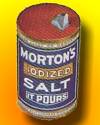
On 1 May 1924, the first iodized table salt in the U.S. went on sale at grocers in Michigan state. The table salt contained 0.01% sodium iodide as a dietary supplement, since an adequate intake of iodine reduces the incidence of goitre (a major swelling of the thyroid gland in the neck.)
What we take for granted when buying salt at the supermarket nowadays was a major step forward in public health compared to a century ago in the U.S.
For a short outline about how the use of iodine supplement was researched, and how significant it was, read Goiter Prevention from Minnesota Medicine (1922). You'll learn the names of some scientists that you probably have never heard of, but the importance of their work has lasted to the present day, since it has been essential for a healthy population.

On 1 May 1851, the Great Exhibition of the Works of Industry of All Nations opened in Hyde Park, London, England. This was the first international exhibition to be held in any country. Housed in Paxton’s magnificent Crystal Palace, it provided a showcase for many thousands of inventions. The legacy of the Great Exhibition of 1851 still lives on today. Several great institutions were founded with the profits, including the Victoria and Albert Museum and Imperial College. Scholarships which were setup (and still continue) reaped an immense contribution to the world’s body of knowledge. Recipients included several Nobel prize winnners: one scholarship went to Rutherford, a son of a New Zealand farmer. Today's book pick is: The Great Exhibition of 1851: A Nation on Display, by Dr. Jeffrey A. Auerbach. This illustrated account reveals how the exhibition was conceived and planned, why it was a success and what it meant to the millions of visitors.
It is available from Amazon, typically about New from $209.97. Used from $1.99. (As of earlier time of writing - subject to change.)
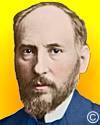 | In the study of this membrane [the retina] I for the first time felt my faith in Darwinism (hypothesis of natural selection) weakened, being amazed and confounded by the supreme constructive ingenuity revealed not only in the retina and in the dioptric apparatus of the vertebrates but even in the meanest insect eye. ... I felt more profoundly than in any other subject of study the shuddering sensation of the unfathomable mystery of life. |
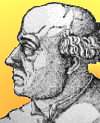 | All substances are poisonous, there is none that is not a poison; the right dose differentiates a poison from a remedy. |
 | There are no summits without abysses. |
| Before you look at today's web page, see if you can answer some of these questions about the events that happened on this day. Some of the names are very familiar. Others will likely stump you. Tickle your curiosity with these questions, then check your answers on today's web page. | |
| Births | |
 | Paracelsus, born 1 May in a certain century, was a German-Swiss physician who condemned medical teaching that was not based on observation and experience. He introduced chemical remedies. He saw illness as having a specific external cause rather than being caused by an imbalance of the humours in the body (though he had an overall occultist perspective). He disputed that mental illness was caused by demons, and linked goitre with minerals in drinking water. In which century did he live his adult life? |
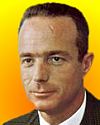 | Today is the birthday of an American astronaut and aquanaut, born in 1925. He was not only one of the original seven Mercury astronauts to be one of the first humans in space (1962), but three years later, he was one of the first humans to live under the ocean in Sealab II. What is the name of this astronaut? |
| Deaths | |
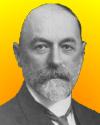 | Herman Frasch was a German-born American petroleum scientist who died 1 May 1914. He is now best known for the efficient process he patented in 1891. It involved drilling into the ground and melting. Yes, melting—so it wasn’t designed to pump petroleum from the ground, but something else. It uses three concentric pipes in the bore hole. What was the product? In one purified form it’s yellow. What is the product of this Frasch process? |
 | Describing blood coagulation and isolating fibrinogen, the key protein in that process, are a certain British anatomist’s claim to fame. He figured all this out before he died 1 May 1774. What is the name of this scientist? |
| Events | |
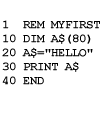 | Programs are so basic to the operation of computers, that you should know the name of this beginner's new computer language that ran its first program on 1 May 1964 at Dartmouth University. Can you name the computer language? |
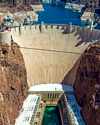 | On 1 May 1935, the huge Boulder Dam on the Colorado River was finished after 4 years and 354 days. A while later, it was given the name by which we now know it. What was the new name given to the Boulder Dam, by which it is now known? |
 | On 1 May 1931, a record-breaking building project was dedicated by the U.S. President. It took only an astonishing one year and 45 days to build this famous 102-story skyscraper in New York City. What is the name of this skyscraper? |
Fast answers for the previous newsletter for April 30: schizophrenia • HMS Beagle • 24 years • mendelevium • corpuscle.
 If you enjoy this newsletter, the website, or wish to offer encouragement or ideas, please send feedback by using your mail reader Reply button.
If you enjoy this newsletter, the website, or wish to offer encouragement or ideas, please send feedback by using your mail reader Reply button. Your click on a Facebook, StumbleUpon, or other social button on the site webpages is also a welcome sign of appreciation. Thank you for using them.
© This newsletter is copyright 2020 by todayinsci.com. Please respect the Webmaster's wishes and do not put copies online of the Newsletter — or any Today in Science History webpage. (If you already have done so, please remove them. Thank you.) Offline use in education is encouraged such as a printout on a bulletin board, or projected for classroom viewing. Online, descriptive links to our pages are welcomed, as these will provide a reader with the most recent revisions, additions and/or corrections of a webpage. For any other copyright questions, please contact the Webmaster by using your mail reader Reply button.
--
If you do not want to receive any more newsletters, Unsubscribe
To update your preferences and to unsubscribe visit this link
Executive Real Estate Business Class
-
"It was like a man with wings. It wasn't like anything you'd see on TV or in a monster movie." ...
About the publisher
Search This Blog
Blog Archive
-
▼
2021
(585)
-
▼
May
(62)
- Tonight: Back-to-Back Premieres
- On This Day for May 31 - Adolf Eichmann hanged, Cl...
- Newsletter for Monday 31 May.
- On This Day for May 30 - Joan of Arc burned at the...
- TONIGHT at 8/7c: The Tulsa Race Massacre Revealed
- Newsletter for Sunday 30 May.
- Bundle Up For The Summer!
- On This Day for May 29 - Mount Everest summit reac...
- Newsletter for Saturday 29 May.
- On This Day for May 28 - Amnesty International fou...
- Newsletter for Friday 28 May.
- On This Day for May 27 - Founding of St. Petersbur...
- Newsletter for Thursday 27 May.
- On This Day for May 26 - Martin Luther declared a ...
- Newsletter for Wednesday 26 May.
- On This Day for May 25 - U.S. Constitutional Conve...
- Newsletter for Tuesday 25 May.
- Behind Every Empire There’s a Titan
- On This Day for May 24 - Opening of the Brooklyn B...
- On This Day for May 23 - Tibet annexed by China, C...
- Newsletter for Sunday 23 May.
- The Tulsa Race Massacre, 100 Years Later
- On This Day for May 22 - Roman Emperor Constantine...
- Newsletter for Saturday 22 May.
- On This Day for May 21 - First nonstop solo transa...
- Newsletter for Friday 21 May.
- On This Day for May 20 - U.S. Homestead Act signed...
- Newsletter for Thursday 20 May.
- On This Day for May 19 - Ringling Bros. Circus for...
- Newsletter for Wednesday 19 May.
- Learning This Fun Doesn't Need A Summer Break
- On This Day for May 18 - Eruption of Mount St. Hel...
- Newsletter for Tuesday 18 May.
- On This Day for May 17 - School segregation outlaw...
- Newsletter for Monday 17 May.
- Follow the trail of 400 facts!
- On This Day for May 16 - Warsaw Ghetto Uprising su...
- Newsletter for Sunday 16 May.
- On This Day for May 15 - Edith Cresson appointed F...
- Newsletter for Saturday 15 May.
- On This Day for May 14 - Declaration of Israel's s...
- Newsletter for Friday 14 May.
- On This Day for May 13 - U.S. declaration of war o...
- Newsletter for Thursday 13 May.
- Ridiculous History You Want To Know About!
- On This Day for May 12 - First flight over the Nor...
- Newsletter for Wednesday 12 May.
- On This Day for May 11 - “New Rome” established by...
- Newsletter for Tuesday 11 May.
- On This Day for May 10 - Nelson Mandela inaugurate...
- Newsletter for Monday 10 May.
- On This Day for May 9 - Fourth and final voyage of...
- On This Day for May 7 - Theatre Royal opened, Pyot...
- On This Day for May 5 - Mexican victory in the Bat...
- On This Day for May 4 - Four students shot at Kent...
- On This Day for May 3 - Margaret Thatcher elected ...
- Newsletter for Monday 3 May.
- TONIGHT: The Bin Laden Raid, Revealed
- On This Day for May 2 - Lou Gehrig's 2,130-game st...
- Newsletter for Sunday 2 May.
- On This Day for May 1 - May Day founded, Arthur We...
- Newsletter for Saturday 1 May.
-
▼
May
(62)
-
Blogroll
-
About
HistoryFact










0 comments:
Post a Comment